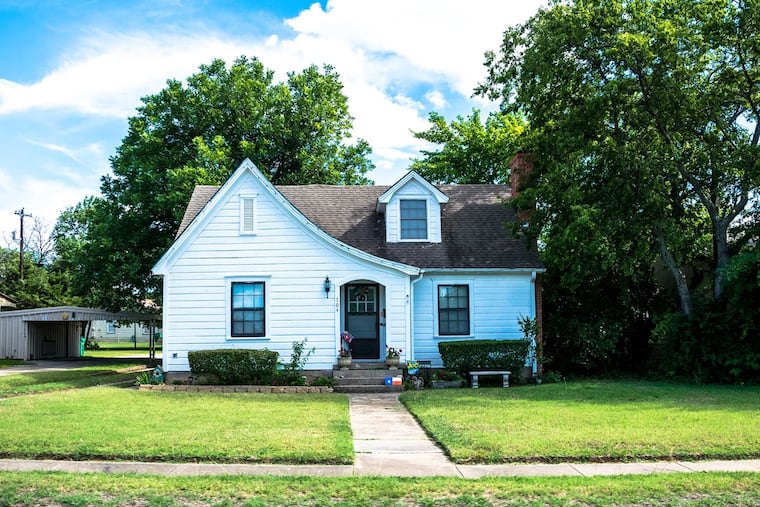America’s housing stock is aging: That can mean good deals but hefty repair bills.
For home buyers frustrated by fierce competition and soaring prices, older homes can present a more affordable option.

American homes aren’t just growing dramatically more expensive. They’re also getting older.
The median age of U.S. homes had risen to 39 years as of 2019, according to the latest American Community Survey. Houses in Philadelphia’s are even older, with a median age of 93. For home buyers frustrated by fierce competition and soaring prices, older homes can present a more affordable option. One obvious caveat: Aging structures need work.
“In many markets, those older homes are more affordable, but they come with an increased need for repairs and maintenance,” says Danielle Samalin, chief executive of Framework Homeownership, a company that coaches first-time home buyers. “Budgeting for maintenance and repairs is critically important.”
Samalin speaks from experience: She and her family live in a 1799 home in western Massachusetts.
She loves the home’s character, although she acknowledges that owning a home built during the presidency of John Adams isn’t for everyone. “Some people think we’re crazy,” she says.
Why homes are getting older
The aging of the U.S. housing stock is partly a lingering bit of fallout from the Great Recession. Overbuilding was a hallmark of the real estate bubble of 2005. Since then, builders have under built. In contrast to the massive suburbs built in the 20th century, the homes that have gone up in recent years have skewed larger, pricier, and less numerous.
» READ MORE: Demand is high for newly built homes, but the pandemic-related delays continue to hinder builders
The result? There just aren’t a lot of new homes in the U.S. housing market. Fully 65% of American homes were built before 1989, according to American Community Survey data.
Homebuyers are adapting to the new reality. According to a recent TD Bank survey of Americans aiming to buy their first home in 2021, fully 71% aren’t looking for a dream home. They’re shopping for a starter home or a fixer-upper.
‘We wanted the soul of the old home’
Samalin’s 3,000-square-foot home has no air-conditioning or garage. Electricity hadn’t been harnessed when the house was built in 1799, and some rooms still have no overhead lights.
Despite the inconveniences, Samalin loves the house. “We’re very happy here,” she says.
A number of state and local grants and zero-interest loans are available to owners of older homes. Samalin tapped into Mass Save, an initiative by Massachusetts’ utilities that funds improvements to energy efficiency.
That program is just one of many forms of financial assistance available to homeowners who opt to invest in aging properties. State and local governments also offer home improvement programs and historic preservation loans that carry favorable terms.
» READ MORE: Historic homes draw wider interest as buyers adapt to the pandemic in a market with limited choices
While an older home requires more attention than a new place, she says the payoffs are many. Her house was framed with locally harvested timber, and she learned that the home’s original owner was a minister who performed more than 100 weddings in one of the rooms in the home. Such quaint touches appeal to her desire to live in a home with a story, rather than a cookie-cutter tract house.
“We wanted the soul of the old home,” Samalin says.
Reasonably priced
Dawn McMullan lives in a home near downtown Dallas that was built in 1870. When she and her husband went house shopping 20 years ago, she was charmed by the Victorian home’s distinctive round windows.
“I thought, ‘That house is just calling to me,’” McMullan says.
She also loved the vintage woodwork inside the house. The brick chimney in the back adds to the Reconstruction-era ambience. McMullan knew the home would need a lot of work, and the neighborhood wasn’t great at the time — but those factors helped push the house into her price range.
“It was very reasonably priced for Dallas,” McMullan says. “I just had a feeling that this was a unique area that was only going to come up in value.” That prediction proved prescient.
But maintaining an old house is a constant project.
“We gutted the kitchen, and we’ve reconfigured almost every space in the house by now,” McMullan says. “It’s certainly a money suck in a lot of ways.”
Because the house is in a historic district, many changes require city approval. And even after upgrades, McMullan’s home hasn’t been thoroughly modernized. There’s no garage, for instance.
While mortgages are available for old homes, McMullan says appraisers can struggle to find comparable properties. McMullan qualified for an incentive that gave her a property tax break for years, part of a city program to lure buyers to older neighborhoods.
Tips for buying an older house
Pay close attention during the home inspection. TD Bank’s Lindner says this is your first chance to really get to know your home’s hidden flaws. “Buyers don’t always take this seriously,” he says. “Really look at the inspector as a person to go around with and learn about the property.”
» READ MORE: Home inspections are a bargaining chip in Philly area’s hot real estate market
Beware of cost overruns. No matter how thorough that cost estimate seems, you’ll discover costly new issues.
Consider a fixer-upper loan. If you deplete your savings for the down payment, that leaves you no cash to pay for repairs. One possibility: an FHA 203(k) loan, a type of mortgage that lets you borrow the purchase price and construction costs based on the post-renovation value of the property.
Look for other sources of help. State and local home improvement programs, historic preservation loans and energy-efficiency programs can provide low-cost money for upgrades. Some municipalities offer breaks on property taxes.